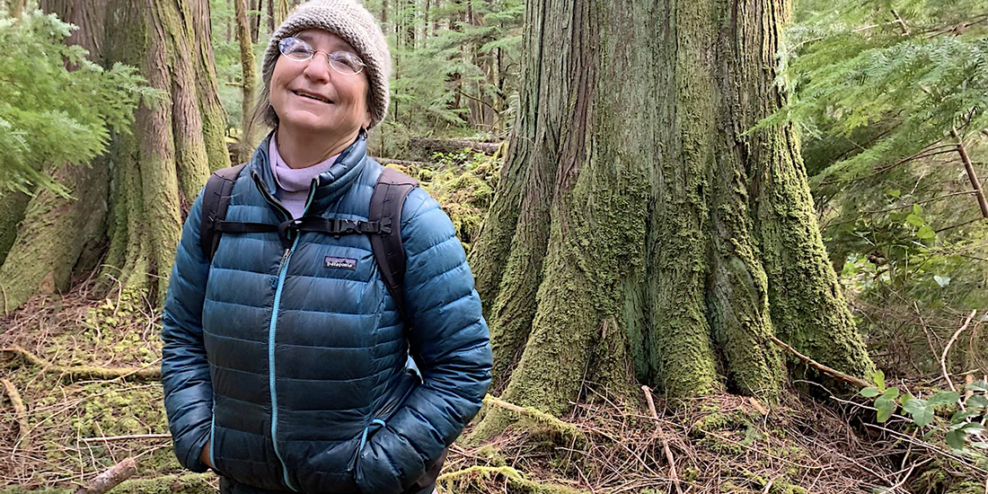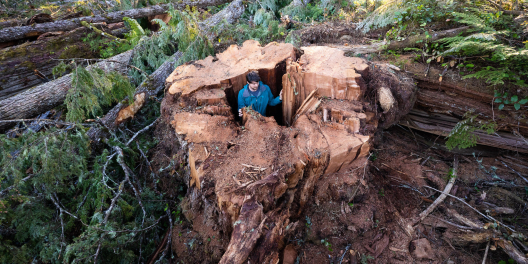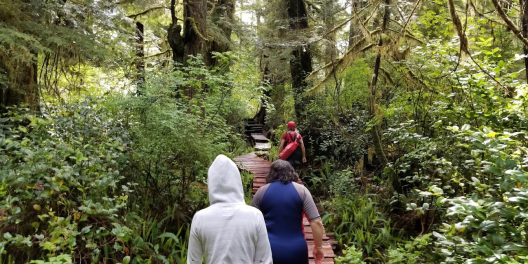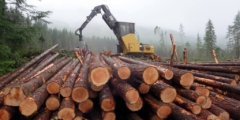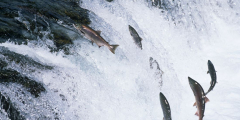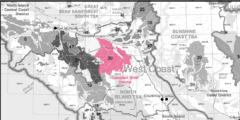Mosaic Forest Management has announced that it will log some of its forests on Cortes Island for the next three years. Cortes Islanders have a couple things to say about that. And they’re coming to the table armed with knowledge you only get when you really know the place.
Mosaic has sent out rough locations and draft maps of the cutblocks they want to log. They promised not to cut down trees that are more than 200 years old, or individual old-growth trees if they can get around them. They say they want to do better than the Crown land regulations around creek and wetland setbacks.
But no one has released specific plans for how they’ll do this.
Protecting trees two centuries and older sounds fine, but there aren’t many of them left. And no one trusts that Mosaic knows where these important trees are.
That’s where local folks come in.
There’s a small squad of Cortesians who are investigating Mosaic’s privately owned cutblocks. They head out into the woods to count and measure the biggest trees. They identify the important wetlands, creeks, and other sensitive habitats. And they put all that data on their own maps.
Mike Moore is a naturalist on Cortes. He’s one of the team who is out surveying the forests. He told the National Observer that big trees and thick, mature forest are hard to find because most of the trees that were easy to reach were cut down over the island’s 130-year history of logging.
“Having so little of that large second-growth, and occasionally first-growth left on the island, that stuff’s precious.”
“We need to know where those stands are because there’s no point trying to hold Mosaic to account after they’ve logged it,” he said.
Beyond the trees, water is also important on Cortes. The island is rocky with thin topsoil. Forests act like sponges that absorb rain in the winter, and then let the water trickle into streams when things dry out.
Lisa Ferentinos is also part of the mapping team. “This is a small rocky island,” she told the National Observer. “If we mess up our water sources, we won’t have agriculture (and) we destroy fisheries.”
Smaller gulf and Discovery Islands have been struggling with water supply in the summer. As the climate warms, the winters get wetter and the summers are drier. Without mature forests to absorb the winter rains, there’s more drought. There’s less water for fish, farming, and drinking.
Cortesians have a history of being feisty fighters when it comes to logging. In 2012, their blockades shut down logging by Island Timberlands, now managed by Mosaic. At the time, Island Timberlands called Cortes “socially inoperable.”
Fast-forward 10 years and the community isn’t totally against logging on the island. But they want it done sustainably. And they want Mosaic to address their concerns about sensitive trees, wetlands, and ecosystems.
“Ideally, we are looking for solutions that are acceptable to everyone,” Moore said.
That’s part of why this small squad of islanders is out there gathering data on the important trees and wetlands. So they can show up to discussions with Mosaic with the locations of areas that must be protected.
Though there are only 1,000 people on Cortes, nearly 500 of them sent a letter to Mosaic asking for a community meeting. That meeting was held on April 20th.
Moore said the meeting was “pitched as a celebration and respectful conversation,” and “not a shouting match.” The poster for the meeting said it was “to recommit to our love of this place.”
Mosaic will come back to Cortes in May with a more detailed logging plan. That’s where folks will have a chance to ask more questions and present their data.
